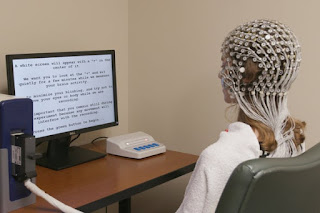Qualcomm has revealed a reference
design for its new virtual and augmented reality platform. The headset offers a
rough guide for building with the Snapdragon XR2, a 5G-enabled chipset designed
for VR/AR hardware. The design is a prototype from electronics company Goertek,
which has worked with Qualcomm before. It looks a lot like Qualcomm’s earlier
XR1 reference design, but it can show off the XR2’s new capabilities, including
support for 5G networks and up to seven cameras, although it still uses 2K
display panels for each eye instead of the maximum 3K resolution for XR2.
Qualcomm’s VR and AR chipset
lineup has become a little complicated. It’s going to keep selling the XR1,
which it announced in 2018. And some headsets, like the Microsoft HoloLens 2,
don’t need a specialized platform, they use normal Snapdragon chips. The XR2
includes features like the support for cameras that track eyes, lips, and
external space. Virtual and augmented reality is often used to sell 5G, since
super-fast internet could let headsets offload some computing power, making
them thinner and lighter. Qualcomm specifically promotes VR and AR for
business.
More information:



